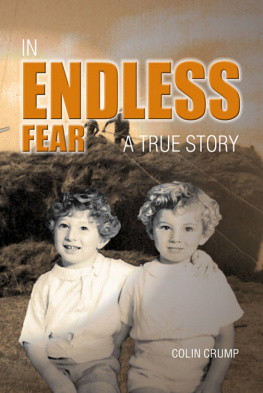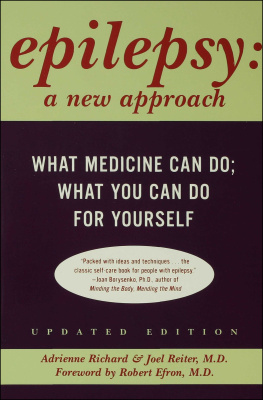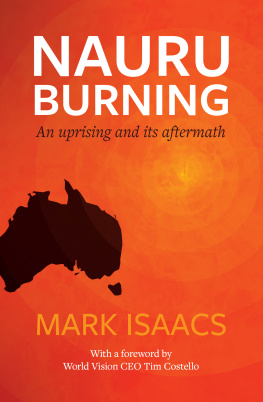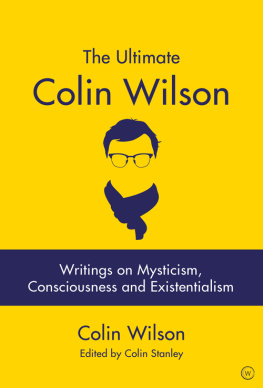Colin Grant - A Smell of Burning: The Story of Epilepsy
Here you can read online Colin Grant - A Smell of Burning: The Story of Epilepsy full text of the book (entire story) in english for free. Download pdf and epub, get meaning, cover and reviews about this ebook. year: 2016, publisher: Random House, genre: Detective and thriller. Description of the work, (preface) as well as reviews are available. Best literature library LitArk.com created for fans of good reading and offers a wide selection of genres:
Romance novel
Science fiction
Adventure
Detective
Science
History
Home and family
Prose
Art
Politics
Computer
Non-fiction
Religion
Business
Children
Humor
Choose a favorite category and find really read worthwhile books. Enjoy immersion in the world of imagination, feel the emotions of the characters or learn something new for yourself, make an fascinating discovery.
- Book:A Smell of Burning: The Story of Epilepsy
- Author:
- Publisher:Random House
- Genre:
- Year:2016
- Rating:3 / 5
- Favourites:Add to favourites
- Your mark:
- 60
- 1
- 2
- 3
- 4
- 5
A Smell of Burning: The Story of Epilepsy: summary, description and annotation
We offer to read an annotation, description, summary or preface (depends on what the author of the book "A Smell of Burning: The Story of Epilepsy" wrote himself). If you haven't found the necessary information about the book — write in the comments, we will try to find it.
A Smell of Burning: The Story of Epilepsy — read online for free the complete book (whole text) full work
Below is the text of the book, divided by pages. System saving the place of the last page read, allows you to conveniently read the book "A Smell of Burning: The Story of Epilepsy" online for free, without having to search again every time where you left off. Put a bookmark, and you can go to the page where you finished reading at any time.
Font size:
Interval:
Bookmark:

Colin Grant is the author of three highly praised books: Negro with a Hat: The Rise and Fall of Marcus Garvey (2008), I and I: The Natural Mystics: Marley, Tosh and Wailer (2011), Bageye at the Wheel (2012). He works as a radio producer for the BBC.
One day Colin Grants teenage brother Christopher failed to emerge from the bathroom. His family broke down the door to find him unconscious on the floor. None of their lives were ever the same again. Christopher was diagnosed with epilepsy.
A Smell of Burning tells the remarkable story of this strange and misunderstood disorder. How certain people, at a particular moment in their life, start to suffer seizures, often preceded by an aura, of which a smell of burning is one of the most common.
For many years epilepsy was associated with mental illness or even possession by devils. People with epilepsy were forbidden to marry or have children. Many became victims of Nazi eugenics programmes. To this day many people with epilepsy sixty million worldwide still live in fear of exposure.
Grants book traces the history of the condition and the pioneering doctors whose extraordinary breakthroughs finally helped gain an understanding of how the brain works. He tells the stories of famous people with epilepsy like Julius Caesar, Joan of Arc, Fyodor Dostoevsky and Vincent Van Gogh, and through the tragic tale of his brother, he considers the effect of epilepsy on his own life.
Negro with a Hat: The Rise and Fall of Marcus Garvey and His
Dream of Mother Africa
I & I: The Natural Mystics: Marley, Tosh and Wailer
Bageye at the Wheel

Are you epileptic? Almost everyone asked this when I told them that I was writing a book on epilepsy. I would like to have said yes to see where the conversation went. On some level, answering no felt like a betrayal. When they followed up with the question, Why are you writing about it? I would describe a scenario:
A man writhes on the ground. His arms slap and snap about him. His legs kick out at some invisible enemy. His head twists from side to side. A strange guttural sound comes from his throat and his mouth froths with foam. Your journey to work is abruptly interrupted by the sight of him. Perhaps the man is drunk. Could he be having a seizure? Youve heard of such a thing but doubt whether youve ever seen one. Then again, maybe he is just drunk. Yes, he probably brought it on himself. In any event you calculate that this is something you cannot deal with. You are paralysed with indecision and look about you. Another person will pass by soon. You move on. Of course you do.
You get to work and play back the incident in your head. A sense of guilt courses through your body as you admit to yourself that obviously you knew what it was all along. That man, I would tell the people who asked about the book, is my brother, Christopher.
The man suffers from epilepsy, a word derived from the Greek for to capture or to seize, which describes perfectly how the disease temporarily takes hold of a person. The seizures are a manifestation of a spooky condition ancient, shadowy and violent for which there is no known cure. But why, after a thoroughly modern education and earnest campaigns of demystification, are we still fearful of people with epilepsy; and why are they so ashamed of their condition?
The uncontrolled spasms seem so bizarre and terrifying to the beholder that for much of human history people with epilepsy were thought to be possessed by devils. Not until the nineteenth century did we get a clearer picture of what was going on, when the pioneering neurologist, John Hughlings Jackson, defined an epileptic seizure as an occasional sudden excessive, rapid and local discharge in the grey matter [of the brain]. It is now possible to imagine a storm of electrical interference that disrupts normal brain function. Only that is on the inside. When a person with epilepsy has a seizure what we see on the outside is his sudden frailty, and his pitiful body wracked by an inexplicable paroxysm.
Through decades of discussion, reportage and advances in treatment, our anxieties over cancer and other potentially life-threatening diseases have diminished. Cancer is no longer a whispered fear word. The same is not true for epilepsy. Our response to it defies rationality. Why, more than in other conditions, does our dealing with epilepsy remain almost primal? Why, when the centuries-old link between epilepsy and mental ill health has finally been broken, do we quietly reassemble it in our heads when observing a man having a convulsion in the street?
For much of history only one form of seizure, the graphic grand mal, was ever recognised. But in the last century, scientists have been able to finesse the broad brushstrokes of our ancestors descriptions of epilepsy to discern numerous forms. Epilepsy, then, is an umbrella term under which seizures fall. Still, there are two main categories: generalised seizures, in both hemispheres of the brain, for which there is no known cause (though inheritance is considered a factor in many cases); and focal or partial seizures which arise in a particular damaged or sensitised part of the brain as a result of congenital disease or trauma, such as a blow to the head.
The story of epilepsy is a remarkable one. If its a shameful, brutal and bruising tale it is also one of redemption. People with epilepsy have resisted and survived purges and pathological attempts to eradicate them as if they were defective carriers of a contagious disease. Throughout history marriage was discouraged for people with epilepsy, and their castration has been strongly proposed to rid humanity of their affliction. In the 1930s and 1940s, under the Nazi eugenics programme, the forced sterilisation of epileptics reached its apogee. But one of the greatest confounders or disrupters to this narrative has been the fact of the large number of famous people known or suspected to have been epileptic. They include Julius Caesar, Joan of Arc, Fyodor Dostoevsky, Edward Lear, Vincent Van Gogh, Harriet Tubman, Vladimir Ilich Lenin, Neil Young and many more.
For some the association with the likes of Caesar lends the condition a kind of glamour, carrying with it the suggestion that it is a disease of the great; for others the fear and awe felt about it is most marked in the crossover between epilepsy and religion as recorded for instance in the visions of Joan of Arc.
In our secular age, scientific inquiry into the relationship between extrasensory perception and temporal lobe epilepsy highlights neurological connections rather than spiritual ones. We look more closely at the fact that in the mind of the nineteenth-century abolitionist, Harriet Tubman, Gods voice and her visions of Zion grew more strongly after she was struck on the head by her slave owner with a heavy metal bar.
No matter the cause, the onset of epilepsy is a puzzle. The condition lies dormant until it is first triggered and then theres no going back. The initial fit will inevitably result in subsequent fits; so that, as the neurologist William Gowers once suggested, every fit may be said to be the result of those which have preceded it, and the cause of those that follow it. But the initial stimulus for the fit, Gowers noted, bears no more causal relation to the disease than does a spark to the explosion of the gun powder on which it falls. The real cause lies within the brain, and remains unknown.
Font size:
Interval:
Bookmark:
Similar books «A Smell of Burning: The Story of Epilepsy»
Look at similar books to A Smell of Burning: The Story of Epilepsy. We have selected literature similar in name and meaning in the hope of providing readers with more options to find new, interesting, not yet read works.
Discussion, reviews of the book A Smell of Burning: The Story of Epilepsy and just readers' own opinions. Leave your comments, write what you think about the work, its meaning or the main characters. Specify what exactly you liked and what you didn't like, and why you think so.













